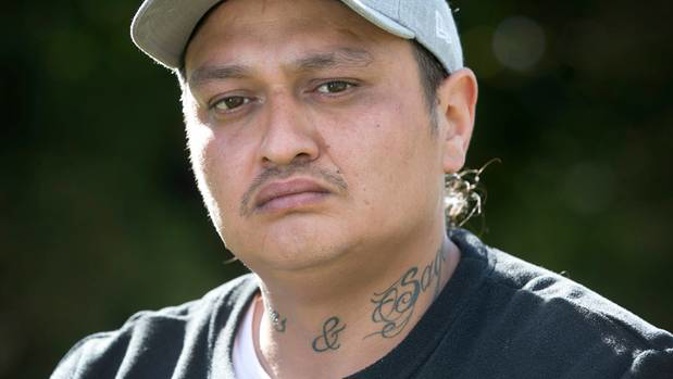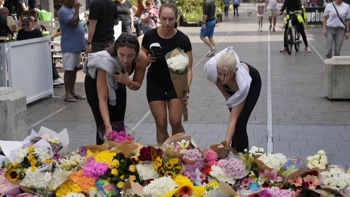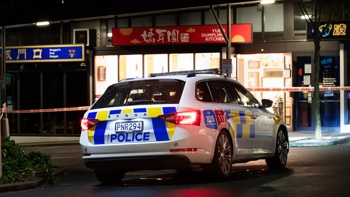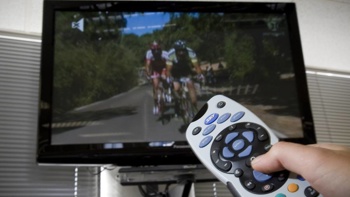
A senior doctor on call the night a baby suffered fatal injuries during birth at Waikato Hospital, was called twice by a concerned midwife before attending.
Now the infant's father has been left wondering if his son's life could have been saved.
Baby Hohepa Hemara Walters-Hughes died on April 5 after his mother Melanie Hughes suffered a ruptured uterus during labour.
But notes in a shift report from that night, obtained by the Herald, together with the mother's patient notes, show several warnings that might have saved the baby's life.
Hughes, from Te Kuiti, arrived in the Women's Assessment Unit at Waikato Hospital in Hamilton at 12.25am.
She was due to have a scheduled caesarean section and her own notes state a semi-urgent C-section was requested to the delivery suite on arrival, but it did not happen.
Hughes, 40, has 17-month-old twins who were born via Caesarean in 2017 because of selective intrauterine growth restriction - a condition that can be fatal for one of the twins.
A previous C-section is a risk factor for uterine rupture but incidence is rare, about three in every 1000 births.
However the risk is increased when a second birth occurs within two years of the first.
It's not clear whether the registrar knew Hughes' history or that she had a Caesarean planned when that doctor said there was "no indication not to have a vaginal birth", according to the shift notes.
The registrar, a doctor with less experience than the on-call senior medical officer [SMO], was tasked with a ventouse [suction-cup] delivery at 1am and was busy with other patients.
Hughes was found to have blood in her waters on arrival but Hohepa's heart rate was recorded as normal, between 120 beats per minute and 160bpm, at about 12.45am.
Shortly after that the baby's heart rate was lost from the monitor and Hughes was in so much pain she wanted the monitoring belt removed from her stomach.
The notes stated: "Asked if they [the registrar] would like SMO called in as CS [Caesarean section] waiting in WAU [Women's Assessment Unit], declined and stated I could phone if I wanted them otherwise they would do CS after ventouse," the shift report states.
"I phoned SMO who declined to come in, had advised that WAU staff concerned as FH [fetal heart rate] and maternal pulse similar, advised registrar to do CS after instrumental."
This was the second time the senior doctor, who is not named in the notes, was called that night according to the handwritten notes. The first time related to another case.
Twenty-four minutes after Hohepa's heart rate was lost it was found again on a hand held Doppler, at just 65 beats per minute.
An emergency bell was sounded and a duty doctor found Hughes had blood clots indicating a likely uterine rupture.
The SMO was called a third time, while Hughes' delivery priority was escalated to category 1 C-section and immediately performed under general anaesthesia.
Hughes' notes state that baby Hohepa and the placenta had been "expelled from the uterus to the abdominal cavity" when the mother's uterus ruptured.
"The baby was delivered feet first, in a poor condition at 1.22am."
It's not clear if the senior doctor had arrived by then.
Hohepa, who weighed a healthy 3450 grams [7.6 pounds], was rushed to the Newborn Intensive Care Unit and placed on a cooling mat used to reduce brain damage in infants deprived of oxygen at birth.
However his injuries were not survivable and Hughes and Hohepa's father, Martin Walters, switched off their baby boy's life support that day.
Walters, 33, told the Herald the couple held their son while he took his last breaths.
"I never lost anybody like that," he said.
He wanted answers over his son's death.
"I knew it could have been prevented. I knew something happened. I knew something was wrong. Everyone was crying, all the nurses."
The couple declined an autopsy because of their cultural beliefs.
When the Herald phoned the senior doctor he said: "No comment" and hung up. He did not respond to earlier messages or emailed questions.
Waikato District Health Board said it would not discuss individual patient cases but earlier confirmed it was investigating the death of a baby on April 5.
Interim chief operating officer Ron Dunham said: "We are reviewing this case and will continue to work with the family over this very sad time".
"Patient safety is at the forefront of everything we do and we encourage staff to report events so that we can continually review and improve the standard of care provided to our patients.
"The Serious Adverse Event procedure ensures a consistent robust review is undertaken with open disclosure to ensure that lessons are learned, shared and acted upon across the Waikato DHB."
The DHB would not comment on whether the case had been referred to the Coroner but the Coroner's office said it had not.
The couple were not aware they could make a claim to ACC for treatment injury. Hughes lost four litres of blood during the Caesarean and is still in pain.
Notes from shift report that night show:
- A woman with severe pre-eclampsia. Magnesium sulphate, usually administered to prevent seizures, directed by SMO over phone;
- A woman needing ventouse [suction cup] delivery;
- Melanie Hughes needing urgent c-section;
- A woman with a third-degree tear that was repaired in the delivery suite without the acting charge midwife manager knowing.
Take your Radio, Podcasts and Music with you









